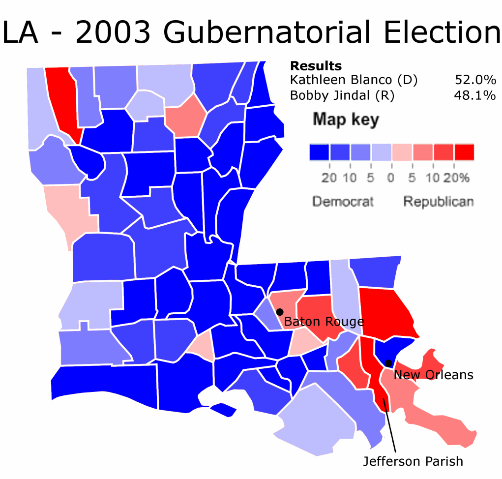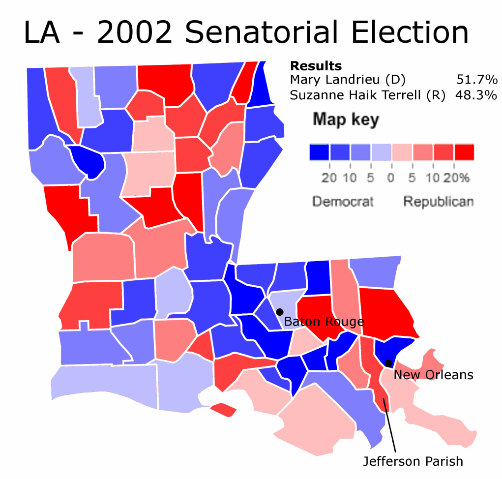This is my first attempt at redistricting Illinois. I drew this map assuming that Governor Pat Quinn wins re-election and Democrats control the redistricting trifecta. SSPers know, of course, that Pat Quinn trails in the high single-digits in the most recent polls, so full Democratic control remains in doubt.
Illinois is predicted to lose a congressional seat in 2012, going from 19 to 18 seats. This necessitated the drawing together of two incumbents, Peter Roskam and Mike Quigley. Illinois also currently has 4 VRA districts (3 African-American, 1 Hispanic) all based in the City of Chicago. I preserved all 4 districts, and I felt that the sharp Hispanic growth required the creation of another majority Hispanic district. Therefore, my map has 5 Minority-Majority districts.



Chicago Area
District 1 (Golden Yellow) Pop. 716,433; 56% Black, 36% White, 6% Hispanic – Bobby Rush (D)
Located in the Heart of Chicago’s South Side, the 1st District remains mostly the same, except that it grows a bit in area and becomes dramatically less Black (formerly 65%, now 56%), but this is all a result of population loss in that area. Still heavily Black and strongly Democratic. Obama ~ 80% – 85%
District 2 (Dark Blue) Pop. 719,391; 55% Black, 32% White, 12% Hispanic – Jesse Jackson, Jr. (D)
The South Side’s other Majority Black district, the 2nd also stays mostly the same, but expands in area and becomes a bit less Black. It takes in some of the Cook County portion of Judy Biggert’s current district, but still remains the most Democratic district in Illinois. Obama ~ 85% – 90%
District 3 (Red) Pop. 712,342; 63% Hispanic, 29% White, 5% Black – OPEN (D)
Unlike most of the other ethnic groups in the city, Chicago’s Hispanic population is growing rapidly. Currently there is only one Majority Hispanic district in Illinois, represented by Luis Gutierrez. The rapid growth, as well as the large distance between the two main Latino enclaves, led me to create two Hispanic majority districts. The 3rd, located on the South and West sides of the City and including Cicero, Berwyn, and Burbank, is predominantly Mexican. Gutierrez, this area’s current Congressman, is Puerto Rican and lives on the North Side. The split will allow the Mexican Community to have it’s own voice in Congress.
Obama ~ 70% – 75%
District 4 (Turquoise Blue) Pop. 716,176; 57% Hispanic, 30% White, 5% Black – Luis Gutierrez (D)
This is Chicago’s second majority Hispanic District. It is primarily Puerto Rican and is located just North and West of the Loop. It is reasonably compact (much better than the previous 4th, at least) and includes Rep. Gutierrez’s home. He would likely be very happy with this district. It remains strongly Democratic. Obama ~ 70% – 75%
District 5 (Purple) Pop. 718,061; 74% White, 14% Hispanic, 8% Asian – Mike Quigley (D) + Peter Roskam (R)
The new 5th District draws together two relatively new Congressman, Democrat Mike Quigley of Chicago and Republican Peter Roskam of DuPage County. Roskam’s District was very evenly divided when he won his first term in 2006, but in 2008 it gave President Obama 56% of the vote. The addition of strongly Democrat-leaning parts of Northern Chicago makes the 5th a likely to safe Democrat district, and Quigley should beat Roskam fairly easily. Obama ~ 60% – 65%
District 6 (Gray) Pop. 718,677; 54% Black, 35% White, 5% Hispanic – Danny Davis (D)
Danny Davis’s District bled population over the last decade, and therefore had to increase dramatically in size. It is the last of Chicago’s 3 majority Black districts, and it stretches from Downtown/The Loop out to the Cook County – DuPage County border, and South to include more conservative suburbs formerly represented by Dan Lipinski. At 54% Black, it is still strongly Democratic. Obama ~ 80% – 85%
District 7 (Pink) Pop. 720,868; 64% White, 13% Asian, 13% Hispanic – Jan Schakowsky (D)
This new district takes up much of North Chicago along the lakeshore, including Lakeview, the Midwest’s largest gay district. Much of this area was formerly in Mike Quigley’s district, but will probably be happier with a strong Liberal like Schakowsky. It also includes her home in Evanston, some North-Western suburbs like Des Plaines and Park Ridge, and other Democrat leaning areas north of the city. It should be safely Democratic. Obama ~ 70% – 75%
Collar Counties/Chicago Exurbs
District 8 (Violet/Purplish Blue) Pop. 718,040; 74% White, 14% Hispanic, 7% Asian – Melissa Bean (D)
Covers a similar territory to Bean’s old district, but now takes in more of Lake and Cook Counties and much less of McHenry County. Moves closer to Chicago, so I would guess that it becomes somewhat more Democratic. Likely still a narrowly Dem-leaning swing district. Obama ~ 55% – 60%
District 9 (Bright Green) Pop. 715,049; 66% White, 18% Hispanic, 10% Asian – Dan Seals (D) or Bob Dold (R)
Mark Kirk’s elusive North Shore district moves a little more into Cook County, and becomes 15% less White in the process (going from 81% to 66%). It now includes Dan Seals’ home in Willmette, as well as Highland Park, Lake Forest, and Waukegan in Lake County. If Dan Seals doesn’t win this district in 2010, another Democrat will in 2012. Obama ~ 65% – 70%
District 10 (Tan) Pop. 712,389; 73% White, 11% Hispanic, 9% Asian – Judy Biggert (R) + Dan Lipinski (D)
This district strongly resembles Judy Biggert’s old 13th, but it was drawn with ConservaDem Dan Lipinski in mind. It includes a portion of his old urban-suburban district, as well as parts of Will and DuPage counties, centered mainly around Naperville. If faced with a Lipinski matchup in 2012, Biggert would probably opt to retire, but if not, or if Republicans can manage to find a moderate State legislator to run, Republicans could hold this district. But Lipinski, a social-conservative who is already well known in the area, would have a significant chance of winning here. Obama ~ 50% – 55%
District 11 (Olive Green) Pop. 718,631; 66% White, 24% Hispanic, 6% Black – Bill Foster (D) OR Randy Hultgren (R)
One of the few Districts in Illinois that has been experiencing steady growth over the past decade, Bill Foster’s district had to shed it’s Western rural counties, but is still centered around Kane, Kendall, and Dekalb Counties. It includes the fast growing, Democrat-leaning, minority-majority city of Aurora, as well as Geneva, Elgin, and DeKalb. Becomes slightly more Democratic, which should help Foster out, though the district is already trending blue. Obama ~ 55% – 60%
Rural Illinois
District 12 (Dark Green) Pop. 712,202; 80% White, 11% Hispanic, 6% Black – Don Manzullo (R)
Manzullo’s district stays mostly the same (centered around Rockford), but loses rural Carrol, Ogle, and Whiteside Counties in exchange for almost all of McHenry. Maybe moves slightly left, but not drastically, and not enough to dislodge Manzullo. Obama ~ 50% – 55%
District 13 (Periwinkle Blue) Pop. 719,998; 76% White, 12% Hispanic, 9% Black – Debbie Halvorson (D) OR Adam Kizinger (R)
The 14th takes in all of Kankakee County, most of Will County, and most of LaSalle County. It loses the strange shaped arm that stretched South into McLean County and becomes much more compact. Minority growth in the Joliet area makes this district a bit more Democratic, and should be a Democratic hold in a neutral year. Obama ~ 55% – 60%
District 14 (Sky Blue) Pop. 717,188; 90% White, 4% Hispanic, 3% Black – Aaron Schock (R)
I had to draw Aaron Schock’s home in Peoria out of his district and into Phil Hare’s but in exchange I gave him a district that is a bit more Republican. It streches South from the Iowa border to strongly Republican Tazewell County, then to the Springfield area, and finally West to include all of McLean County. Should be safely Republican. Obama ~ 45%
District 15 (Orange) Pop. 717,498; 88% White, 6% Black, 3% Hispanic – Timothy Johnson (R)
Stays almost exactly the same, covers the same area along the Indiana border and leans strongly Republican. Obama ~ 45% – 50%
District 16 (Dark Purple) Pop. 716,746; 83% White, 9% Black, 4% Hispanic – Phil Hare (D)
This district is now much more compact than it used to be. It includes the Illinois portion of the Quad Cities, Peoria, and a small portion of Springfield, as well as a large swath of rural farming counties along the Iowa border. Should be safe for Hare, though the area is trending Republican. Obama ~ 55% – 60%
District 17 (Green) Pop. 717,602; 81% White, 15% Black, 2% Hispanic – Jerry Costello (D)
I tried to shore up Costello’s district as much as possible, but it’s still more or less the same. It loses some of it’s far Southern counties along the Kentucky border that have been trending Republican, and gains Macoupin and Montgomery Counties, both of which were won by Obama. Still, the needle doesn’t move too much. Obama ~ 55%
District 18 (Yellow) Pop. 711,505 89% White, 7% Black, 2% Hispanic – John Shimkus (R)
Still the most Republican district in Illinois, Shimkus’s doesn’t change much. It’s hard to believe this district was once represented by Dick Durbin. Obama ~ 40% – 45%








